Log in or create new account to save this product to your wishlist.
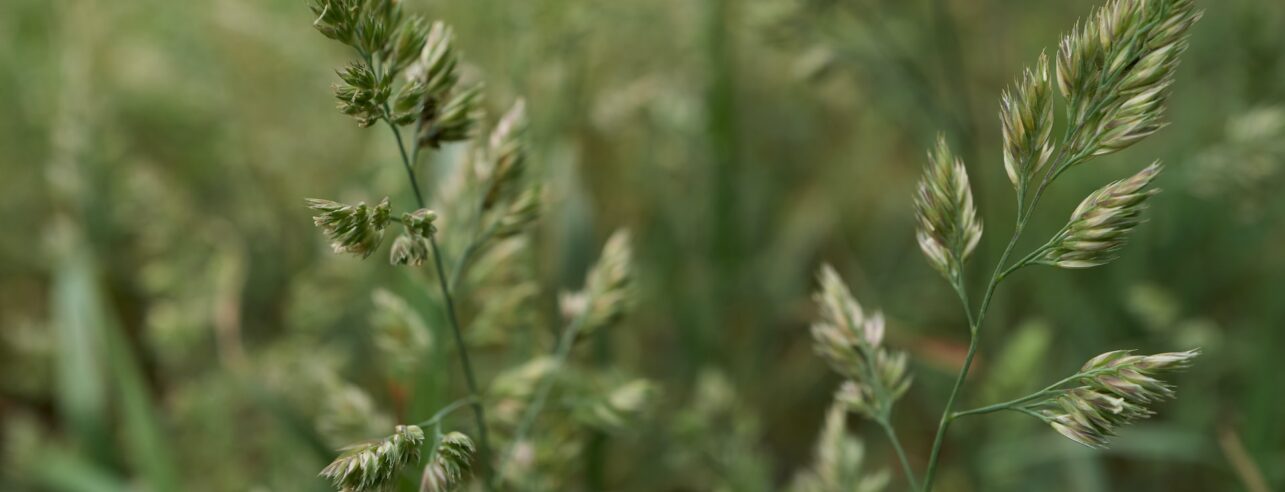
Weed grasses in your lawn: how to identify & get rid of them?
Weed grasses weaken the resistance of your lawn, causing bald spots and diseases. The general advice is: act quick! Read on for the lowdown.
🌱 All important maintenance moments for your lawn during the year. Leave your email and we will send you the lawn calendar for free.
Enter your email
Receive the lawn calendar in the mail
Enjoy a green lawn all year round!

- Order by 2PM = shipped today
- 250.000+ satisfied customers!
- 60 day satisfaction guarantee
You work hard all year to develop a beautiful lawn. And then you spot grass of a different type creeping in — growing erratically and ruining the uniform colour and texture you’ve worked so hard to cultivate. Weed grasses are widespread in the UK and, in many cases, just part and parcel of owning a lawn.
- What are weed grasses?
- How to spot weed grasses in your lawn
- Some anatomical terms you might not be familiar with:
- How do you recognise wild grass in the lawn?
- Common UK weed grasses
- Weed grasses #1: Meadow Grass (Poa annua)
- Weed grasses #2: Cocksfoot (Dactylis glomerata)
- Weed grasses #3: Yorkshire Fog (Holcus lanatus)
- Weed grasses #4: Hairy Finger grass (Digitaria sanguinalis)
- Weed grasses #5: Rough-stalked meadowgrass (Poa trivialis)
- The damage of wild grass
- Fighting weed grasses in your lawn
- Preventing weed grasses in your lawn
Weed grasses spread through bird droppings, seeds stuck to the bottom of your shoes, or carried into your garden by the wind. So, avoiding weed grass invasions is difficult unless you have a particularly robust and healthy lawn.
This article explores how to recognise weed grasses and what to do when they set up home in your lawn. Where do they come from, and how do you tackle the problem?
(Quick tip: act fast!).
Ready?
Better get going!
What are weed grasses?

Weed grasses (aka wild grasses) are just grass from the same biological family as the lawn you’ve sown or laid down. And that’s what makes tackling weed grasses such a challenge. Because if you kill the weed grass with a chemical, you kill the surrounding grass you want to keep hold of.
So, chemical solutions are usually ineffective in removing weed grasses — it’s basically like burning your house down to get rid of the dust.
How to spot weed grasses in your lawn
The first sign that you’re accommodating wild grasses in your lawn is unevenness on the turf’s surface. Domestic lawn grasses are usually selected because they grow relatively consistently and upright, but weed grasses often have a more erratic growth pattern.
You probably chose your lawn seed or turf because it matches your garden’s conditions — a single species or curated seed mix will produce a uniform texture and colour.
Weed grasses present a slightly different colour to the rest of your lawn — often a paler green, but sometimes weed grasses have brownish-red blades. And some grasses grow in erratic patterns — growing sideways or outwards from the centre of the plant rather than upwards.
Finally, wild grasses often grow at a different rate to the rest of your lawn and may have less drought resistance than your typical lawn grass. This means it could go brown or yellow more quickly and flower at a lower height – before sprouting into seed (which could exacerbate the problem).
The typical advice is: act fast if you spot weed grasses in your lawn.
Some anatomical terms you might not be familiar with:
In this article, I’ll be referring to the grass plant in specifics, so there are some terms you might not be familiar with.
So, a brief biology lesson:
Raceme
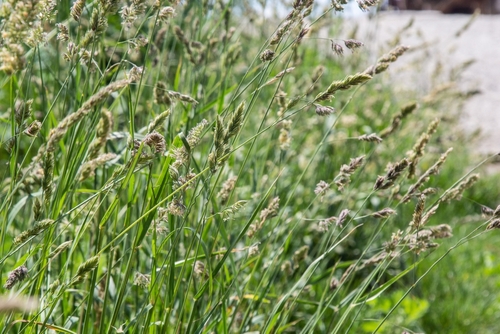
A raceme is a flower cluster where the blooms are attached by stalks of equal length along the central stem.
Common examples of raceme are buddleia, snapdragon, foxglove, or wheat grass.
Panicle
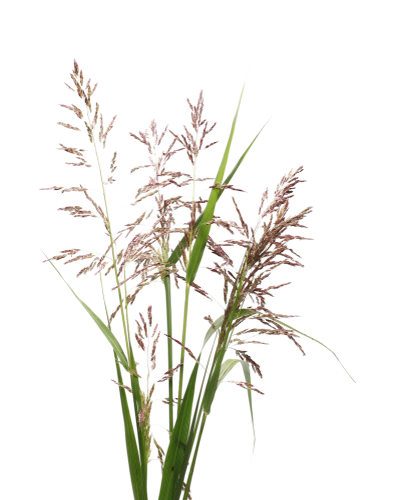
A panicle is a loose, branching flower cluster.
These are commonly found on oats, rice plants, or lilacs.
Petiole

In grasses, the petiole is the stalk section that connects the plant stem to the leaf blade.
Every day’s a school day, hey?
How do you recognise wild grass in the lawn?
So, now we have the language to recognise the different parts of grass plants, we can explore the different types of weed grasses you’re likely to find in a UK lawn.
First, look out for the following signs of a weed grass invasion:
- Your lawn appears patchy, with some grasses of a different texture and colour
- Flowers and small pale seed heads appear below the cut line, giving your lawn a “peppered look.”
- Patches of your lawn turn brown before others during drought, creating a burnt appearance.
Common UK weed grasses
These are the weed grasses you’re likely to find in UK lawns:
Weed grasses #1: Meadow Grass (Poa annua)
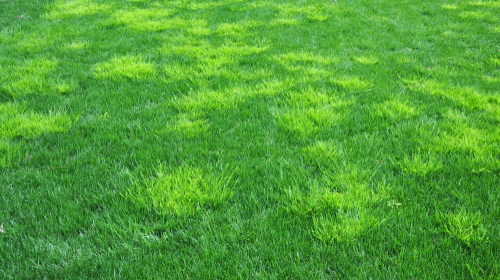
Meadow grass invading a lawn
Poa annua is often called Meadow Grass or Street Grass and is by far the most common unwanted grass variety in the UK.
You might think that “street grass” suggests that this type of wild grass only grows between the cracks in the pavement, but it’s commonly found in sports fields, golf courses, and — unfortunately — your garden.
Meadow grass is a pale green and produces little seed heads in white panicles. The seeds germinate in lower temperatures than typical lawn grass, so they could spread over the winter while you’re not tending to your lawn.
Annual meadow grass lays low to the ground; the blade grows to a maximum height of 30cm and will spread through your garden like a zombie apocalypse.
This variety of wild grass is an opportunist — if you have bald spots in your lawn, meadow grass (and other weeds) will take its place. So, keep your lawn dense by regular overseeding.
Weed grasses #2: Cocksfoot (Dactylis glomerata)
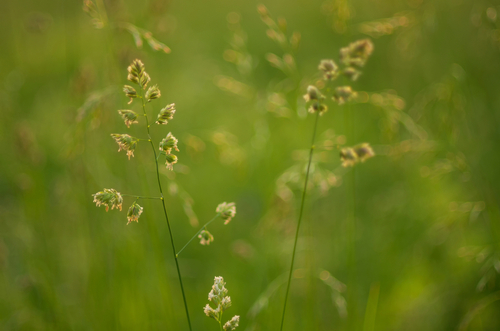
Sounding more like an insult than a grass variety, Cocksfoot is also commonly called Cat Grass. This variety is bluish-green and can grow to 1m in height, with clusters of dense panicles traditionally said to be the same shape as a cock’s foot — hence the name.
Commonly grown on farms for grazing and hay, cocksfoot is particularly persistent and, once established, very difficult to remove — it has a typical lifespan of up to ten years!
First sprouting in spring, the deep and complex root system thrives in light, well-drained soil but can survive claggy soils prone to flooding.
The distinguishing characteristics are:
- Papery, pale yellow seeds (around 4mm in length)
- Dark bluish-coloured blades with long flat leaves, narrowing to a point.
- Grows slowly immediately after germination but spreads aggressively.
Cocksfoot is quite challenging to remove, and your lawnmower may not reach it unless you first lift the blades by hand. It can be a nuisance in newly sown lawns and likes warm temperatures for germination, so it is most likely to appear between May and August.
If you leave cocksfoot in your lawn, it will steal the water, light, and nutrients from your lawn.
Weed grasses #3: Yorkshire Fog (Holcus lanatus)
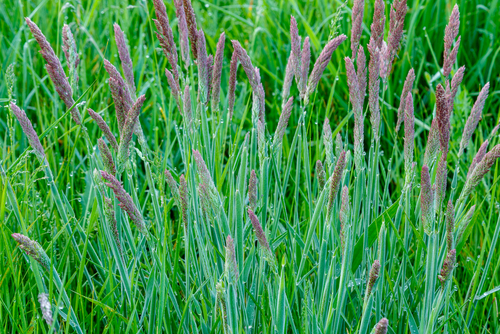
Yorkshire Fog is a pale green grass variety with broad, slightly hairy leaves. As with many weeds, Yorkshire Fog is known by various names — Couchgrass or Crabgrass being the most common.
Yorkshire Fog grows in clumps, making it noticeable against the rest of your lawn, especially when it’s allowed to establish. This weed grass is most evident after fertilising, which usually turns your lawn grass a deep green; Yorkshire Fog doesn’t respond to fertiliser like that — it remains pale green.
How to kill Yorkshire Fog
There are a couple of ways to deal with Yorkshire Fog — there’s a gently-gently method and a distinctly nuclear approach.
The gently-gently method is to dig up the clumps and replace them with fresh lawn seed or turf. Yorkshire Fog is surprisingly delicate and easily damaged, so scarifying may kill it completely. However, waiting for it to die is a relatively slow process, so cutting it out is often the favoured approach.
If the clumps are large and established, you could use glyphosate to kill them. However, you must be super careful because this will also destroy your good grass, so apply this chemical sparingly. After two weeks, the Yorkshire Fog should have died, so it’s time to rake the dead grass away and reseed. To ensure seamless coverage, overseed the surrounding patch — it will help the new grass blend in with your old.
So, that’s the semi-nuclear approach.
The full nuclear approach is not for the weak-hearted and is only recommended if Yorkshire Fog has taken hold of your lawn and won’t die. The answer here is to kill the entire lawn by removing the old turf – rotovating the soil, and then reseeding. In this case, check out our expert’s guide to repairing a damaged lawn.
Weed grasses #4: Hairy Finger grass (Digitaria sanguinalis)
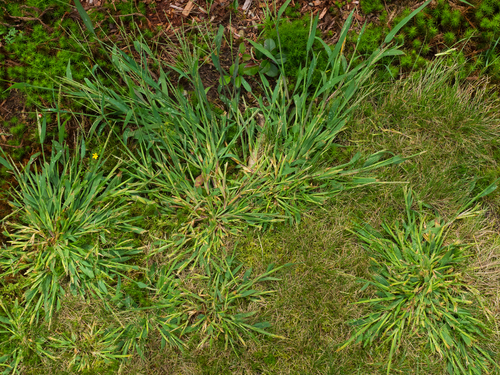
Hairy Finger grass grows between July and October, often seen sprouting between cracks in the pavement or on your patio. The plant spreads from a central stem and spreads outwards like a ripple of a pond. It can spread rapidly, forming colonies of patches and ruining the look of your lawn.
Hairy Finger favours full sun and grows both in rich, dense earth and light, sandy soils.
Luckily, Hairy Finger grass doesn’t survive frost very well, so it’s likely to be killed off by a cold snap. Avoid this annoying spreader by keeping your lawn as healthy and dense as possible, so it outcompetes this unsightly weed grass.
Weed grasses #5: Rough-stalked meadowgrass (Poa trivialis)
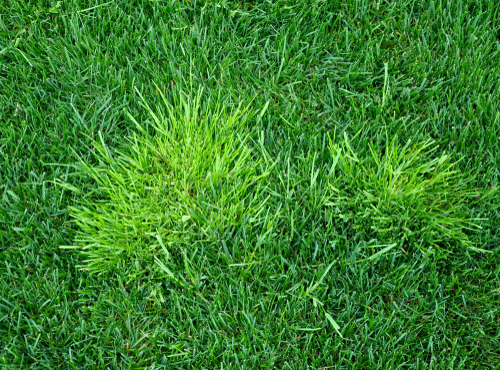
Rough meadow grass grows in dense clumps of stiff, coarse, broad dark green leaves. Growing well in shaded areas, it may grow better than your chosen lawn grass underneath trees, so it could be OK just to leave it beneath trees and large shrubs.
However, you don’t want to encourage rough-stalked meadowgrass as it looks messy and will ruin the look of your lawn. A better option for shaded areas of your garden is to choose a shade-tolerant grass seed variety, such as MOOWY’s Sun & Shade lawn seed, which produces a beautiful lawn in both sunny areas and the shade.
Pull out small patches or individual plants wherever you spot rough-stalked meadowgrass, and cover any bald patches with high-quality lawn seed.
The damage of wild grass
Wild grasses can weaken the overall resistance of your lawn, causing bald spots and diseases. Some weed grasses are particularly hungry and thirsty, effectively taking the water, nutrients, and light away from the grass you do want to nurture.
So, if you spot weed grasses in your lawn, it’s a good idea to try and get rid of it.
Fighting weed grasses in your lawn
As mentioned, the chemical approach to fighting weed grasses is the nuclear approach and best avoided.
So, you can fight weed grasses by:
Pulling up
The most effective method is to pull up the plant in its entirety. Remember, the roots for some of these weeds, such as Cocksfoot, are deep – so dig down to remove the roots. Some grasses spread via overground runners, so ensure you capture the entire network.
Scarifying
Most weed grasses have relatively shallow roots, so scarifying your lawn will help kill off unwanted grass varieties.
Check our expert’s guide to scarifying your lawn for more information.
Mowing
Regular mowing is often enough to combat most weed grasses.
Let your grass grow tall, then cut it short — while it’s not recommended to cut domestic grasses too short, weed grasses won’t cope at all. Your lawn grass will bounce back from scalping as long as it’s irregular.
However, Meadow grass can withstand short-mowing, so it won’t be effective if this is your invasive variety.
If you have weed grasses in your lawn, always collect the grass clippings; don’t add them to your compost or you risk further spread.
A short period of drought
If your lawn is well-fertilised, it will cope with short periods of drought, while weed grasses don’t tend to cope well with a lack of water.
So, if you spot invasive grasses, don’t water for a while — it should be enough to kill off the weeds.
Avoid mulching
Sometimes it’s good for your lawn to leave the grass clippings on the ground — they’ll dissolve after a couple of days and feed your soil.
But, if you have weed grasses, avoid this practice; otherwise, you could encourage weeds to spread.
Preventing weed grasses in your lawn
It’s difficult to negate the risk of weed grasses completely, but remember the general rule: a healthy, thriving lawn is more resistant to weed invasions.
So:
Mow regularly
Regular lawn mowing prevents many weeds from establishing. Check out our expert’s guide to mowing your lawn.
Fertilise
Apply fertiliser at least three times a year. That way, your chosen lawn variety will thrive, leaving less opportunity for invasive species to take hold.
Avoid mulching if you discover weed grasses — you’ll just encourage spread.
Not sure what you’re looking for when buying fertiliser? Check out our expert’s guide to NPK fertilisers.
Reseed and overseed
Having a dense turf is the best way to avoid weeds of all types. So, overseed regularly — that way, your lawn will remain young, vibrant, and dense.
Do you have questions?
We hope we’ve helped you spot and tackle weed grasses in your lawn. But if you have any questions, please don’t hesitate to get in touch.
We love to hear from you and will reply as quickly as we can.
Thanks for reading!
The term “weeds” just means unwanted plants. Weeds are just opportunist plants that grow in unwanted places. Weeds in lawns are often a symptom of unhealthy turf, so scarify, fertilise, and mow regularly to avoid the potential for weeds. The most common weed grasses in the UK are Meadow grass, Cocksfoot, Hairy Finger grass, and Rough-stalked Meadowgrass.
Many weeds are broad-leafed, while domestic grass in the UK tends to be thin-leafed. However, weed grasses are often a different colour than the rest of your lawn — they may be paler than well-fertilised grass. Weed grasses are often less drought tolerant than healthy lawn grass, so you may find patches of dead grass during drought.
Crabgrass is the colloquial name for a couple of weed grass varieties, most commonly confused with Yorkshire Fog and Hairy Finger grass. Hairy Finger grass sprouts outwards from a central stem and can spread quickly, while Yorkshire Fog grows in patches and remains pale green even after fertilising.
-
Lawn Edges: Cutting, Mowing & Maintenance TipsFind out why maintaining lawn edges is important. How to cut and mow them. Check out our handy tips for the perfect lawn edging maintenance.Read more
-
Identifying and controlling millet in your lawnMillet is an edible crop, loved for its edible, highly nutritious grain. However, you may find millet in your lawn, spread through bird droppings. Find out how to identify and control millet in your lawn.Read more
-
Identifying Common Garden Weeds in the UK: A Comprehensive GuideWeeds can be a nightmare. Or they might be a blessing. This article will help you decide!Read more
-
How to Get Rid of Weeds in Your GardenRemoving weeds from your garden doesn't have to be a struggle. Explore effective control and prevention techniques for a carefree green space.Read more
-
Common garden weeds: can I eat them?Weeding is probably the most hated of all garden chores. But – actually – you might be culling a superfood that grows without any attention at all.Read more
-
How to Beautify Your Lawn with Garden LimeImprove your lawn with lawn lime for the right soil structure and nutrients. Everything you need to know about spreading lime for a healthy lawn.Read more
-
How to get rid of moss: THE Lawn Moss Killer Guide of 2023Lawn moss killer is your essential weapon in fighting invasive moss that can kill your lawn. Find out when and how to use lawn moss killer.Read more
-
How to Improve Your Lawn in a Shaded Garden | Complete GuideHow to Improve Your Lawn in a Shaded GardenRead more
Leave a comment
Your answer will be displayed on the site and the interested party will be notified by email.
Leave a comment
Have a question or want to share your experience? Leave us a comment.

- Order by 2PM = shipped today
- 250.000+ satisfied customers!
- 60 day satisfaction guarantee

- Order by 2PM = shipped today
- 250.000+ satisfied customers!
- 60 day satisfaction guarantee

🌱 All important maintenance moments for your lawn during the year. Leave your email and we will send you the lawn calendar for free.
Enter your email
Receive the lawn calendar in the mail
Enjoy a green lawn all year round!





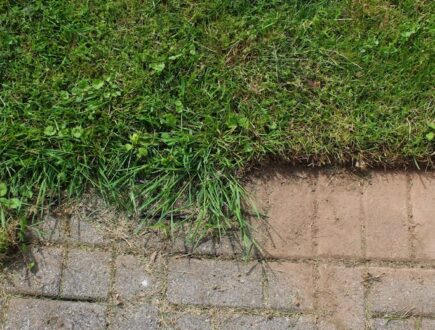
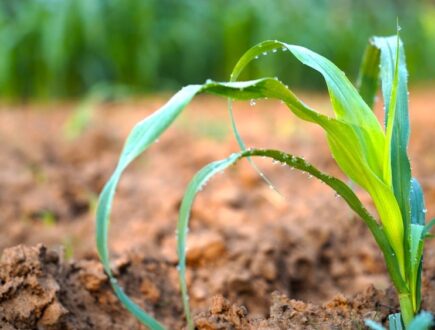
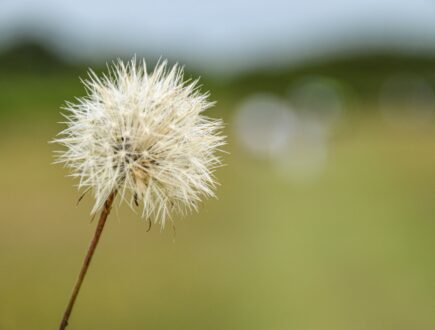
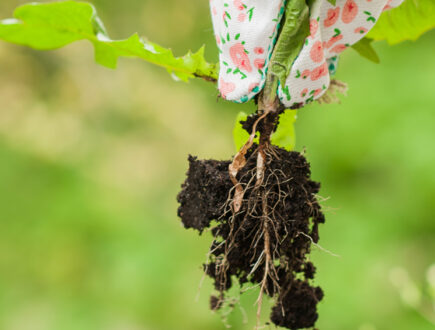













Comments (0)
There are no comments yet. Well then, what are you waiting for to
Be the first to write your comment!inaugurate this pretty page?
Do you have some comments?